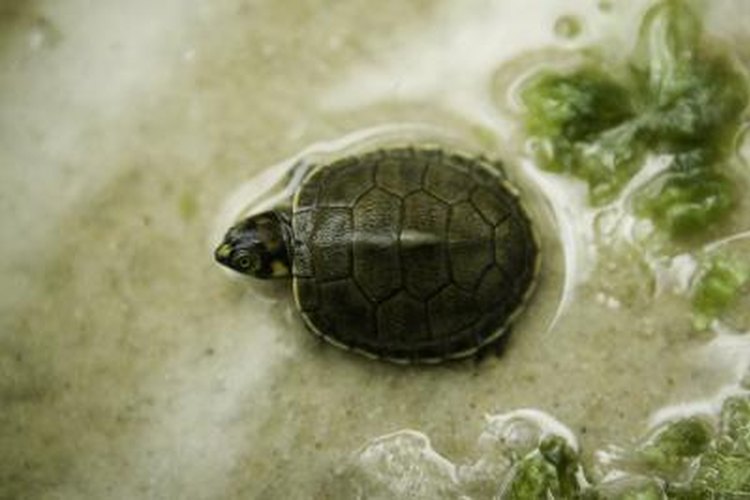To keep a turtle tank from smelling, regularly clean the tank and filter to remove waste and debris. Adding live plants can also help maintain water quality and reduce odors.
As a turtle owner, it’s essential to provide a clean and healthy environment for your aquatic pet. A smelly tank not only indicates poor water quality but can also be harmful to your turtle’s health. By following simple maintenance routines and incorporating natural elements into the tank, you can ensure a pleasant living space for your turtle while minimizing unpleasant odors.
We will explore effective strategies to keep your turtle tank clean and fresh, promoting a thriving habitat for your beloved pet.

Credit: animals.mom.com
Proper Filtration
Proper filtration is essential for maintaining a clean and odor-free turtle tank. A good filtration system helps to remove waste and debris from the water, ensuring a healthy environment for your pet turtle. Let’s explore the key aspects of proper filtration to keep your turtle tank smelling fresh.
Choose The Right Filter
When selecting a filter for your turtle tank, it’s crucial to choose one that is specifically designed for the size of your tank and the number of turtles you have. A filter that is too small will not effectively remove waste, while an oversized filter may create excessive water flow, which can stress your turtles.
Consider the type of filtration your tank needs. Mechanical filtration removes solid waste and debris, while biological filtration helps to break down harmful ammonia and nitrites. Chemical filtration can also be beneficial for removing impurities and odors from the water.
Clean The Filter Regularly
Regular maintenance of the filter is essential to ensure its optimal performance. Cleaning the filter regularly prevents the buildup of waste and bacteria, which can lead to foul odors in the tank.
Follow the manufacturer’s instructions for cleaning and replacing filter media. This may involve rinsing or replacing filter pads, sponges, or cartridges. Avoid cleaning the entire filter at once to preserve beneficial bacteria that aid in biological filtration.
Water Changes
Water changes are a critical aspect of maintaining a clean and odor-free turtle tank. Regular water changes help remove waste and excess nutrients, ensuring a healthy environment for your pet. By following these simple steps, you can effectively manage water changes and keep your turtle tank fresh and clean.
Change The Water Regularly
Regular water changes are essential for maintaining water quality in a turtle tank. Aim to replace 25-50% of the water every 2-4 weeks, depending on the tank size and the number of turtles. This helps remove waste and prevent the buildup of harmful substances that can cause unpleasant odors.
Use A Water Conditioner
When performing water changes, use a water conditioner to remove chlorine and chloramine from tap water. These chemicals can be harmful to turtles and may contribute to foul odors in the tank. Be sure to follow the instructions on the conditioner product for the proper dosage based on your tank’s size.
Proper Feeding
Proper feeding plays a crucial role in maintaining a clean and odor-free turtle tank. By following a few simple guidelines, you can ensure that your turtle is well-fed while preventing excess waste that can lead to unpleasant smells.
Feed The Turtle Appropriately
Feed your turtle the right amount of food to avoid overfeeding, which can result in uneaten food rotting in the tank.
Remove Excess Food
Always remove any uneaten food from the tank promptly to prevent it from decomposing and causing foul odors.
Tank Maintenance
To prevent a turtle tank from emitting unpleasant odors, regular maintenance is key. Clean the tank weekly, remove uneaten food promptly, and use a good filtration system. Ensure proper water quality by testing regularly and changing the water as needed.
A clean tank leads to a fresh-smelling environment for your turtle.
Clean The Tank Regularly
Scrub Algae And Debris
Avoid Overcrowding
When it comes to keeping a turtle tank from smelling, one of the key factors to consider is to avoid overcrowding. Overcrowding in a turtle tank can lead to a build-up of waste and uneaten food, which can quickly result in foul odors. By ensuring that you don’t keep too many turtles and choosing the right size tank, you can effectively prevent overcrowding and maintain a clean and odor-free environment for your turtles.
Don’t Keep Too Many Turtles
Keeping too many turtles in a single tank can lead to an overabundance of waste, causing the water quality to deteriorate rapidly. This can result in strong odors and an unhealthy environment for your turtles. It’s important to limit the number of turtles in a tank to ensure that waste levels remain manageable and the water quality stays pristine.
Choose The Right Size Tank
When selecting a tank for your turtles, it’s crucial to choose a size that allows ample space for the number of turtles you intend to keep. A larger tank provides more room for the turtles to swim, bask, and explore, reducing the likelihood of waste accumulation and odor development. By choosing a tank of appropriate size, you can create a healthier and more comfortable living space for your turtles.

Credit: m.youtube.com

Credit: www.reddit.com
Conclusion
To maintain a fresh-smelling turtle tank, regular cleaning and proper filtration are essential. By removing waste, debris, and uneaten food promptly, you can prevent odors and keep your turtle healthy. Remember to monitor water quality and provide a suitable environment for your pet’s well-being.
Happy tank-keeping!






Leave a Reply